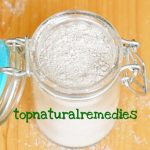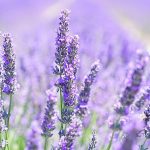Allergy to Cold – Symptoms and Natural Treatment
There are numerous people nowadays suffering from allergies: food, medicines, pollen, dust, sun, wind, heat and cold have all become allergens. The sudden burst of red spots on the skin after a prolonged exposure to cold might be a sign of allergy.

Allergy to Cold – Symptoms
The most common sign of an allergy to cold is the redness of the face and hands. Many consider this to be a normal thing during the winter. These symptoms can be noticed 10 – 15 minutes after the exposure to cold.
The red spots can also appear on the legs and spread all over the body. Sometimes they are red, but they can also become lilac. In some cases, these spots are accompanied by swelling, pains, itching and burning and cold sensations of the affected areas. If the person has drunk or eaten something cold, then their lips, tongue and throat can get swollen.
In most cases, these symptoms will disappear as soon as the person gets into a warm room, puts on some gloves or covers their face with a comforter. The symptoms will get worse if there is a sudden transition from cold to heat. In the most severe cases, the allergic rashes on the face and hands can last up to 7 – 12 hours.
Cold urticarial is a more serious allergy that is inherited. The normal symptoms are accompanied by fever, headaches and muscle and joint pains. They will occur in 30 minutes or 2 hours after the exposure to cold.
The allergies can also be caused by cold air, wind, the consumption of cold drinks, the contact with the snow and washing the laundry or dishes in cold water. These types of allergies are also characterized by the redness of the skin and the apparition if spots and itching.
The main cause of the allergy to cold is not known yet. It mostly occurs in youngsters with ages between 17 and 27, but the kids and elderly are also affected. In most of the cases, the condition will disappear after a few years. You can figure out if you’re suffering from this type of allergy by applying an ice cube on your forearm and keep it there for 5 minutes. If the skin gets inflamed and the redness the itching occur, then you suffer from allergy to cold. However, you should consult your doctor to establish a diagnosis.
Allergy to Cold – Natural Treatments
Nettle is the best and most accessible plant when it comes to treating all kinds of allergies thanks to its anti-histaminic properties. They will ease and even eliminate the allergy. Drin 3 cups of nettle tea per day for one month. This will cleanse the blood and the body.
St. John’s Worth oil is ideal for skin allergies. Apply it on the affected areas on a daily basis.
Celery is a great medicine for allergies. It can be consumed in salads or you can try a treatment with celery juice, drink 1 glass, 3 times per day, for one month.
Mix 1 tablespoon of chamomile, 1 tablespoon of corn silk, 1 tablespoons of horse tail, 1 tablespoon of rose hip, 2 tablespoons of dandelion, 2 tablespoons of St. John’s Worth and 2 tablespoons of nettle. Mix all the plants and prepare a tea with 1 teaspoon of the mixture and 1 cup of boiling water. Consume 1 cup of tea, 3 times per day for a few months.
The rose hip tea is also useful when it comes to allergies. Drink almost 500 ml per day, for one month.
An useful homemade recipe for cold allergies is the following: mix the juice from 10 lemons with 2.5 kilograms of honey and 1.5 kilograms of minced aloe vera leaves. Put this mixture in a jar and close it tightly for 10 days. After that, you can take 1 teaspoon, 3 times per day. Throughout the treatment, you must avoid consuming dairy products.
Also, it is extremely important to boost your immune system. You can try different treatments with propolis, sea buckthorn, garlic, beer yeast, vitamin C and Echinacea or any other natural remedies that increase the immunity.
You should also cover your hands, face and head every time you get out in the cold.



